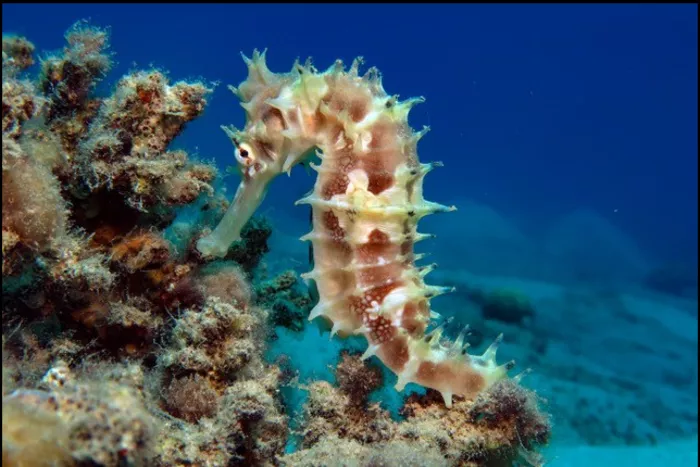Seahorses—slow swimmers, swift hunters
A study demonstrates how the length of a seahorse's snout affects the kind of prey it catches.
Seahorses appear to be slow passive hunters as they use their tail to cling to coral or seaweed. However, this can be deceiving, as they are swift, efficient hunters.
A recent study by Tel Aviv University, published in the Journal of Experimental Biology, documents the speed at they hunt.
Three species of seahorses with varying snout lengths were chosen for the study: Jayakar's seahorses, sea ponies and short-snouted seahorses.
When their prey swims by, their body becomes a spring. Using their back muscles, they stretch an elastic tendon, and use their neck bones as a trigger. This swift head movement is accompanied by a powerful flow of water that snags prey right into their mouth.
In the study, it was found that the Jayakar's seahorses, which had the longest snouts (∼9 mm), produced the slowest sucks while the short-snouted seahorses (with ~5mm snouts) were twice as fast. However, in terms of the speed with which the seahorses reared back their heads, the short-snouted seahorses were relatively slower.
"Our study shows that the speed of head movement and suction currents are determined by the length of a seahorse's nose," said Prof. Roi Holzman of the School of Zoology at the George S. Wise Faculty of Life Sciences and the Steinhardt Museum of Natural History at Tel Aviv University.
"From the evolutionary aspect, seahorses must choose between a short nose for strong suction and moderate head raising, or a long nose for rapid head raising and weaker suction currents. This choice, of course, corresponds to the available diet: long-nosed species catch smaller, quicker animals whereas short-nosed species catch heavier, more ponderous ones."



























